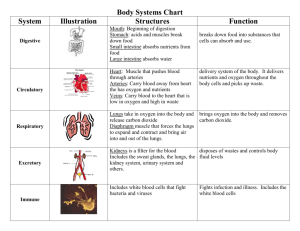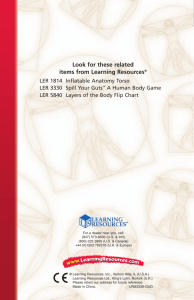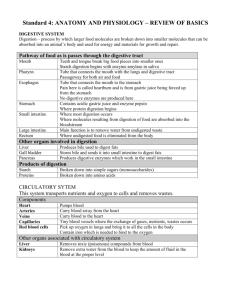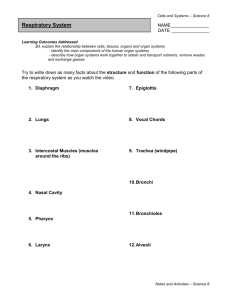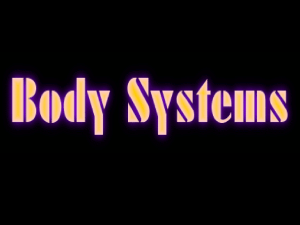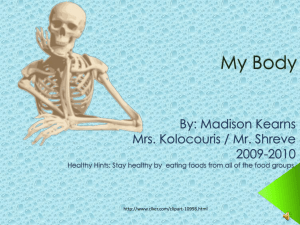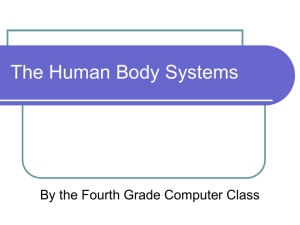answers
advertisement
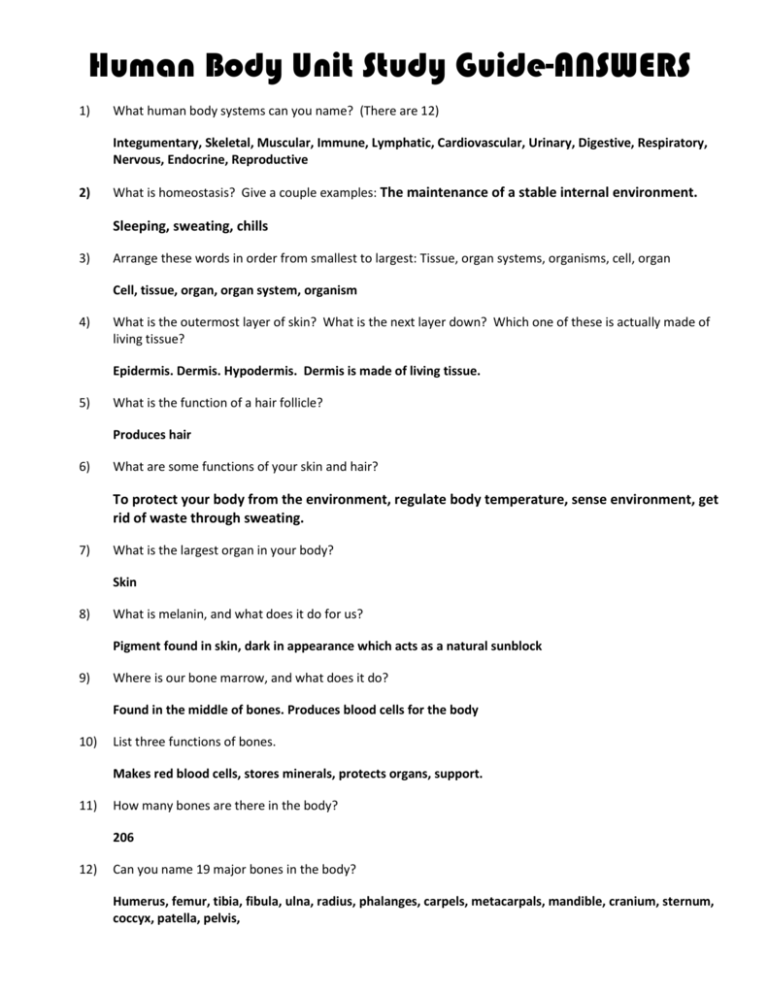
Human Body Unit Study Guide-ANSWERS 1) What human body systems can you name? (There are 12) Integumentary, Skeletal, Muscular, Immune, Lymphatic, Cardiovascular, Urinary, Digestive, Respiratory, Nervous, Endocrine, Reproductive 2) What is homeostasis? Give a couple examples: The maintenance of a stable internal environment. Sleeping, sweating, chills 3) Arrange these words in order from smallest to largest: Tissue, organ systems, organisms, cell, organ Cell, tissue, organ, organ system, organism 4) What is the outermost layer of skin? What is the next layer down? Which one of these is actually made of living tissue? Epidermis. Dermis. Hypodermis. Dermis is made of living tissue. 5) What is the function of a hair follicle? Produces hair 6) What are some functions of your skin and hair? To protect your body from the environment, regulate body temperature, sense environment, get rid of waste through sweating. 7) What is the largest organ in your body? Skin 8) What is melanin, and what does it do for us? Pigment found in skin, dark in appearance which acts as a natural sunblock 9) Where is our bone marrow, and what does it do? Found in the middle of bones. Produces blood cells for the body 10) List three functions of bones. Makes red blood cells, stores minerals, protects organs, support. 11) How many bones are there in the body? 206 12) Can you name 19 major bones in the body? Humerus, femur, tibia, fibula, ulna, radius, phalanges, carpels, metacarpals, mandible, cranium, sternum, coccyx, patella, pelvis, 13) What is the function of cartilage? Provides support and cushioning between bones 14) List and describe the three main types of joints and an example of where each can be found? Ball and socket (shoulder, hip) a fully moving joint that can rotate 360 degrees Gliding (hand, foot) bones glide over one another Hinge (knee, elbow) only has ability to bend up or down. 15) What is the difference between a ligament and a tendon? Ligament connects bones to each other. Tendons connect bones to muscles. 16) List and describe the three types of muscles. Cardiac- Found in the heart Smooth- Found in digestive track Skeletal- Connected to skeleton 17) Which muscle in your body never gets tired? Cardiac 18) What is the difference between voluntary and involuntary muscles? Voluntary muscles are under conscious control while involuntary are controlled by central nervous system. 19) Which type of muscle is voluntary? Give a couple examples: Skeletal is voluntary, Cardiac and Smooth are involuntary 20) What is the main function of muscles? (Muscles do one thing: ______ ) Move the skeleton, body heating system 21) What is the difference between a flexor and an extensor muscle? Give an example of each: Flexor’s (bicep) bend the muscle, extensor’s (tricep) allow muscle to extend or straighten. 22) What is the only place in the body you can find cardiac muscle? Heart 23) Compare and contrast resistance exercise with aerobic exercise. Resistance would be considered anaerobic (without oxygen). Aerobic would be endurance exercises (requires oxygen) 24) How many chambers does the heart have? Name all of them and identify their function. 4 chambers. Right atrium (collects blood from body) Right Ventricle (Pumps blood to lungs) Left Atrium (Collects blood from lungs) Left Ventricle (Pumps blood to body) 25) What order does the blood flow through the heart? See above 26) What is the largest artery in the body? What does it do? Aorta- Blood from left ventricle pumps into the aorta which delivers to your entire body. 27) What is the function of capillaries? Microscopic- Allow for Oxygen and CO2 exchange 28) Name the two functions of the lungs: Inhalation/Exhalation 29) How do the cardiovascular and respiratory systems work together? Cardiovascular system delivers blood to the entire body and back to the heart, respiratory brings oxygen in to the body to attach to the red blood cells and rids the body of carbon dioxide through exhalation. 30) When the diaphragm muscle contracts, what is happening? When it relaxes, what is happening? Contracting diaphragm will cause lungs to inflate (inhalation) Relaxing will cause lungs to deflate (exhalation) 31) Outline the path of oxygen from the atmosphere to the blood using the parts of the respiratory system below: Lungs, pharynx, trachea, alveoli, nose, larynx, bronchi Nose -> Pharynx -> Larynx -> Trachea -> Bronchi -> Lungs -> Alveoli 32) Define cellular respiration. C6H12O6 + O2 CO2 + H2O + Energy 33) 34) The two types of digestion are mechanical and chemical. Match the word below to the type of digestion associated with it. a. Teeth- Mechanical b. Saliva- Chemical c. Stomach Acid- Chemical d. Peristalsis- Mechanical e. Digestive enzyme- Chemical Which digestive organ uses both mechanical AND chemical digestion? Small intestine- Peristalsis (mechanical) Chemical (digestive enzymes) 35) From the mouth what is the path food will take through the digestive system. Use the organs below: 36) a. Stomach/Esophagus b. Large intestine/Stomach c. Esophagus/Small Intestine d. Rectum/Large Intestine e. Anus/Rectum f. Small intestine/Anus Which part of the digestive system is responsible for removing water from the food digested? Large Intestine 37) What is the function of the villi in the small intestine? Remove nutrients from the digesting food (chyme)




